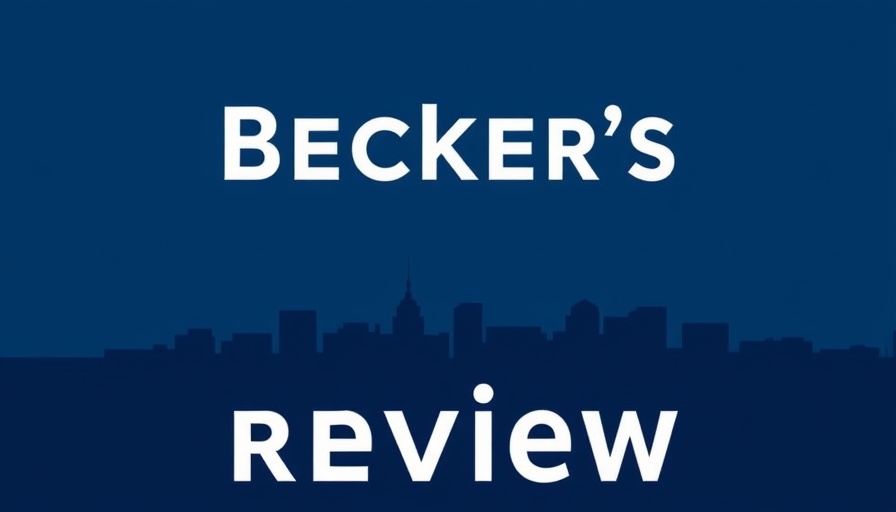
Innovation Meets Stability: Stanford's Unique Approach
At Stanford Medicine Children’s Health in Palo Alto, California, innovation may steal the spotlight, but the focus lies in a less flashy yet incredibly vital component: maintaining stability in healthcare IT. Dr. Keith Morse, the new Chief Medical Information Officer (CMIO), emphasizes that systems must function predictably for clinicians. 'When doctors log into their computers, they need things to work every day as they expect them to,' he explains. This foundational commitment paves the way for the healthcare system to thrive while exploring new technology.
Addressing Pediatric Challenges with Technology
One of the core missions at Stanford is to tackle the unique challenges faced in pediatric care. This includes navigating the often complicated territory of adolescent privacy. In California, teens have specific rights that support their ability to seek confidential care. Yet, many electronic health records link closely to parents' information. Dr. Morse and his team are working to create flexible systems that adjust to different levels of care ownership, accommodating both a 14-year-old ready to take charge of their health and a 17-year-old still relying on parental oversight. 'It’s up to us to create systems that can provide the confidentiality that teens want while recognizing their varying maturity trajectories,' he asserts.
Pushing Forward with AI and Machine Learning
Artificial intelligence (AI) is Stanford's next significant frontier. Recently, the health system introduced ambient scribe tools, which enable AI to generate documentation summaries that ease the burden of administrative tasks on clinicians. This initiative aims to streamline workflows, allowing more time for critical patient interactions. The overwhelming interest from clinicians in these new AI tools is noteworthy. Dr. Morse describes this enthusiasm as unlike typical IT rollouts, where doctors often resist change. Instead, curiosity about AI's potential for enhancing patient care drives demand.
Transforming Care Through Improved Information Sharing
The past five years have seen remarkable improvements in how medical information is shared across institutions. Dr. Morse often encounters patients who have visited multiple clinics or emergency rooms before reaching Stanford. Now, he can obtain documentation, lab results, vital signs, and medication records almost instantly, which empowers families to focus on their child's care rather than piecing together fragmented medical histories. 'It’s not perfect, but we can do things now that were unheard of five or ten years ago,' he reflects.
The Balancing Act: Goldilocks Doctrine of IT Change
Describing his role, Dr. Morse uses the metaphor of 'Goldilocks,' where the goal is to find a 'just right' balance between necessary change and stability. He recognizes that while stability and predictability are paramount, change is inevitable, and opportunities for improvement abound in how care is delivered and IT systems support that care. This vision fosters a culture where innovation advances without overwhelming healthcare providers and patients alike.
Future Insights: What Lies Ahead for Healthcare IT?
As the healthcare landscape continues to evolve, with a growing reliance on digital health solutions, there are countless opportunities for innovation in patient engagement tools, medical office workflow, and practice revenue optimization. Remote therapeutic monitoring (RTM) programs and Medicare-backed services suggest promising trends that could redefine care delivery, especially for independent practitioners and pharmacy owners looking to adapt to patient needs. As technology progresses, healthcare providers must remain agile to implement changes that enhance service while ensuring compliance with current regulations.
Conclusion: Embracing Change while Maintaining Stability
In the ever-evolving world of healthcare technology, finding the right balance between innovation and stability is crucial for delivering effective pediatric care. As Stanford Medicine navigates this complexity, they serve as a beacon for other providers aiming to integrate new technologies while ensuring a seamless experience for clinicians and patients alike. Understanding and adapting to these advancements can lead to improved outcomes, increased patient engagement, and ultimately, a more efficient healthcare system. For independent clinicians and healthcare providers, it’s essential to embrace a mindset of adaptability to thrive in this digital age.
Are you ready to explore how advanced healthcare automation can benefit your practice? Discover tools and strategies that can enhance productivity and patient engagement today.
 Add Row
Add Row  Add
Add 




Write A Comment